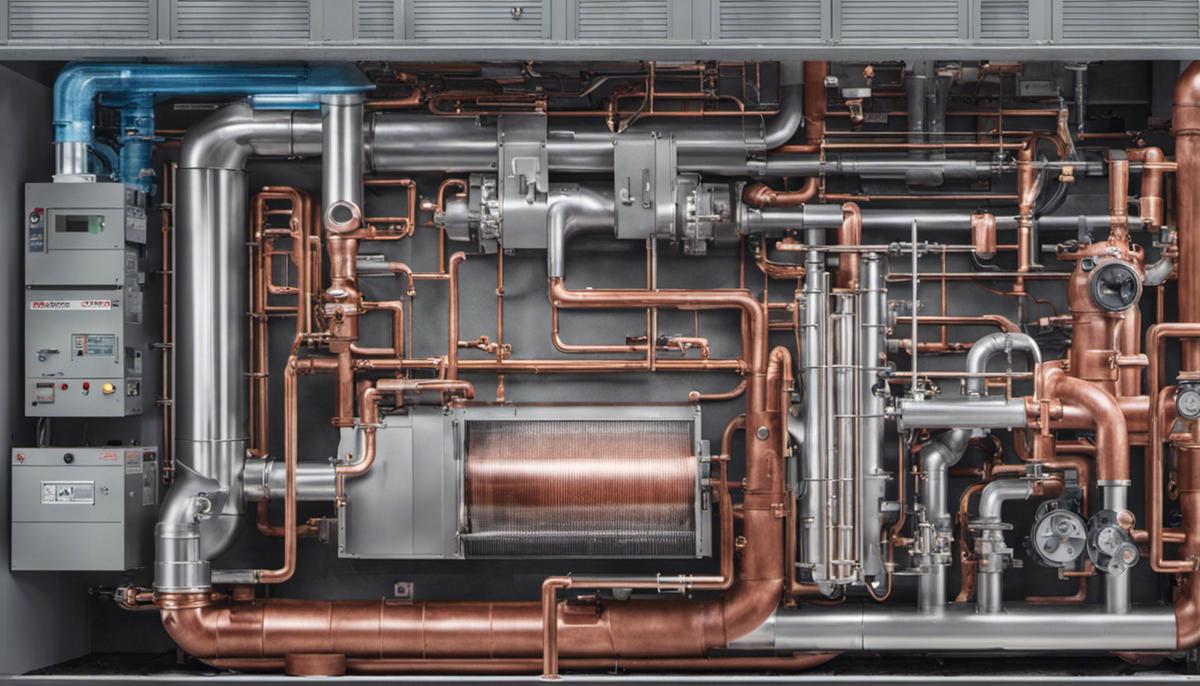In our quest to harness the power of nature, humans have devised numerous methods to keep their habitats comfortable under varying climatic conditions. Two such common heating solutions – heat pumps and furnaces – stand as prime examples of our technological triumphs. As the world becomes increasingly cautious over energy consumption, an informed analysis on these thermal systems becomes important. This discourse delves into the intricate details about the functionality of these heating systems, the energy efficiency exposé, the ecological implications, an economic evaluation, and a sneak peek into the trends projected to shape the future of heating technologies.
Table of Contents
The Science Behind Heat Pumps and Furnaces
The Science Behind Heat Pumps and Furnaces: Principles and Heat Generation
Heat pumps and furnaces are pivotal mechanisms that maintain our comfort during the extremes of the seasons. These systems work under the principles of thermodynamics, fluid mechanics, and heat transfer, fostering an optimum environment within functionally diverse settings. In essence, a fundamental comprehension of the scientific principles powering these units aids in understanding their efficiency, and the advent of intricate designs substantiating their ubiquitous positioning in homes and workplaces.
Heat pumps, based in essence upon the principles of refrigeration, operate as dual-purpose units, offering both heating and cooling services. The basic working principle hinges on the second law of thermodynamics, specifically concerning heat transfer. A refrigerant, the medium carrying heat, circulates through a cycle of evaporation and condensation within the pump, shuttling heat from one location to another.
In heating mode, the heat pump pulls heat from an external source, such as the outdoors or groundwater. The extracted heat is transferred to the refrigerant, which evaporates into gas due to the obtained thermal energy. This hot gas is then compressed to intensify the heat, subsequently delivered indoors via heat exchangers. Thus, the cycle prompts a compelling transference of heat from an ostensibly cold location to warm the interior of a building.
Conversely, furnaces generate heat rather than relocate it. Primarily, they follow the principle of combustion, utilizing a fuel source (like natural gas, oil, or electricity) to produce heat. The fuel supply is ignited within the combustion chamber, inciting a controlled fire. This process raises the temperature of heat exchangers, elements commonly crafted from metal to optimally conduct heat.
As the hot exhaust gases are vented outside, cool air circulates around the heated exchangers, absorbing the conducted heat. This air is then distributed throughout the building employing ductwork, ensuing a warm and cozy environment, especially beneficial during periods of intense cold.
It’s important to note that the efficiency of heat pumps and furnaces varies. Heat pumps demonstrate superior efficiency in milder climates, as they merely transfer heat rather than generate it, a process demanding less energy. Furnaces, on the other hand, excel in performance in colder climates where the heat pump’s ability to extract heat from the outdoors is limited.
Our growing understanding of these heating systems ultimately bolsters their design, performance, and utilization, facilitating an ongoing advancement in intricacies of comfort and convenience that remain largely unobserved in our daily lives. Without a doubt, delving into these principles of thermodynamics and heat transfer reveals an undeniable appreciation for the ingenuity introduced in our pursuit of creating sustainable and efficient heating systems.
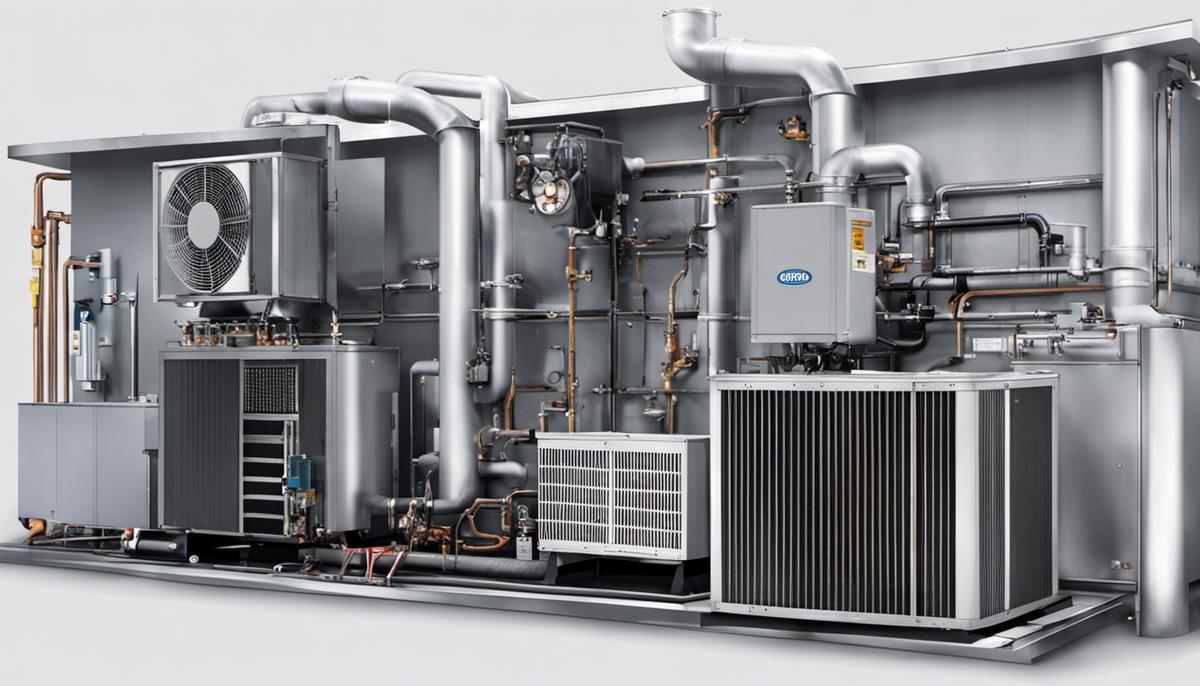
Comparative Energy Efficiency
Delving deeper into the comparison of energy efficiency between heat pumps and furnaces, we encounter a multifaceted issue, delicately entwined with environmental factors, energy sources, the conditions of usage, and technological advancements.
The Coefficient of Performance (COP) works as an excellent yardstick to highlight the disparity in energy efficiency between heat pumps and furnaces. While fossil fuel furnaces typically present an efficiency rating of approximately 78-98%, the COP of a heat pump, which can exceed 300%, offers stark contrast. This astonishing figure serves to simply imply that a heat pump can produce over three times the amount of energy it consumes, a representation of its remarkable thermal performance.
However, this depiction is not without complexities. When delving into the intricacies of energy usage, it becomes crucially important to consider heat pump performance under varied temperature conditions. The COP of a heat pump decreases as external temperatures plummet, casting a shadow over their exceptional efficiency rating. Conversely, the efficiency of furnaces remains relatively constant, unhindered by fluctuations in climatic conditions.
The energy source of these heating systems plays another pivotal role in decisive comparison. In thermal efficiency terms, electric furnaces can function close to 100%, yet this might paint an overly optimistic picture. An in-depth examination must consider energy generation and transmission losses, leading to a comprehensive understanding that electrical grids typically present a 30% efficiency. Thus, directly comparing electric furnaces and heat pumps, the clear lead of heat pumps in energy efficiency becomes a murkier domain.
The emergence of ground-source or geothermal heat pumps has further intensified this debate. Tapping into the Earth’s constant subterranean temperature, these devices showcase remarkable resilience to cold external climates, and present an impressive COP that can reach up to 600%.
On a closing note, a spotlight must be cast on the costs associated with these systems. Though furnaces might offer an alluring low initial investment, the long-term operational costs and higher energy consumption creates an economic advantage for heat pumps. The benefits are further amplified when considering significant strides in heat pump technology, such as inverter technology, which have escalating potential to enhance their energy efficiency.
Developments in heating system design, and an unwavering commitment towards sustainable energy practices, are continuously redefining the benchmarks of energy efficiency. As we continue this academic exploration into heating systems, the intricate dynamics between heat pumps and furnaces serves as a testament to the sophistication and complexity of thermodynamic principles.
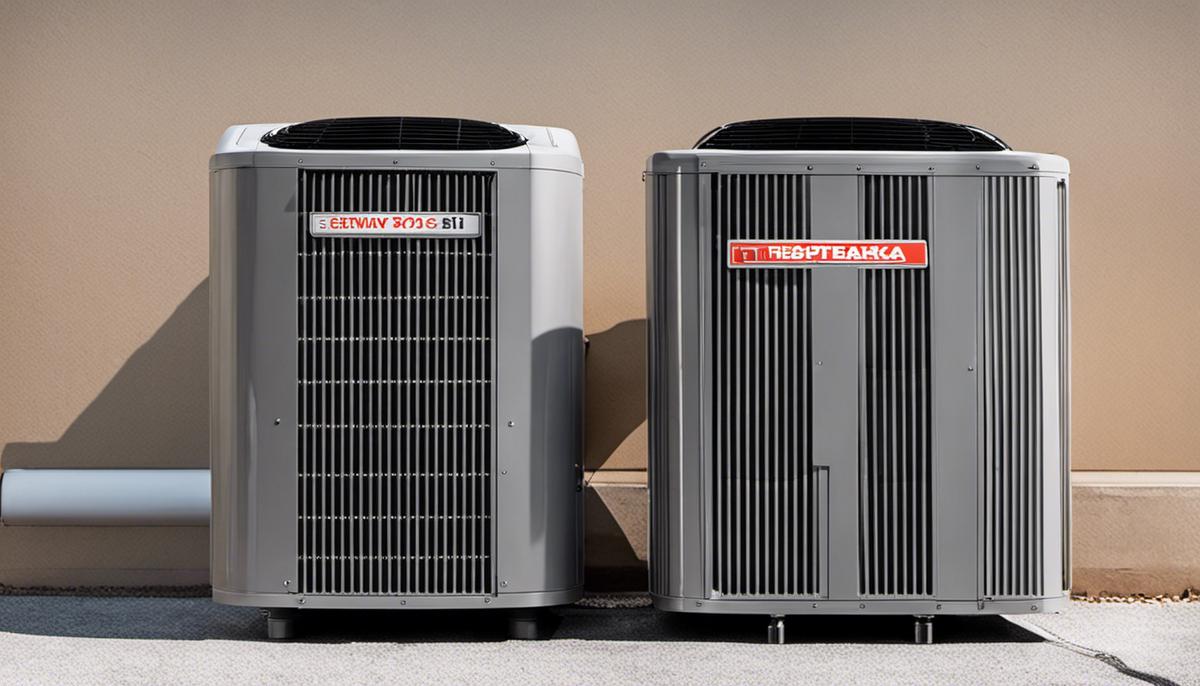
Ecological Implications of Heating Systems
Understanding the potential environmental impacts of heat pumps and furnaces requires a comprehensive evaluation of several related factors. Primary among these are the energy sources used, the emissions produced during operation, and the impact on natural resources.
Heat pumps, by tapping into existing heat naturally available in external sources such as air, water, or ground, typically use less energy than furnaces that produce heat from combustion. Hence, using heat pumps reduces the consumption of conventional fuels, leading to a significant decrease in the carbon footprint, particularly when electricity utilised by the heat pump is generated by renewable energy sources like solar or wind power.
Meanwhile, furnaces largely depend on fossil fuels such as natural gas, oil, or coal for heat. The combustion of these fuels inevitably results in the emission of carbon dioxide (CO2) and other pollutants, contributing to the atmospheric greenhouse effect and air pollution. While newer, high-efficiency furnaces can reduce this environmental impact by using less fuel and emitting fewer pollutants, their operation still inherently involves the burning of finite fossil resources.
Furthermore, furnaces’ reliance on combustion often involves extraction and transportation of fossil fuels, thereby causing its own set of environmental impacts including risks of spills, habitat disruption due to mining, and emissions from transportation.
Also, it is important to note the environmental considerations related to the lifespan and disposal of these heating systems. Heat pumps and furnaces, once reaching the end of their useful lives, become contributors to electronic waste. This underlines the importance of designing products with end-of-life disposal and potential recycling in mind.
While highlighting the environmental impacts, it is equally necessary to emphasise the importance of energy-saving strategies at a systemic level for sustainable heating practices. Effective thermal insulation and airtightness of buildings, for example, can significantly reduce the energy demand for heating, thus reducing the potential environmental impacts of both heat pumps and furnaces.
As heating systems continue to evolve, the onus is on scientific investigation and technological innovation not only to increase their efficiency but also to unravel means to mitigate the associated potential environmental impacts. Given the environmental stakes, a shift towards sustainable energy for heating, along with strategic energy-saving measures, must be championed. In such a paradigm, the benefits of systems like heat pumps which harness natural ambient energy will become increasingly pertinent.

Economic Evaluation
Delineating the Cost Implications of Furnaces and Heat Pumps
The financial considerations associated with the implementation and continued usage of heating systems, more specifically heat pumps and furnaces, are intrinsically linked to the initial capital, installation, operation, maintenance, and replacement expenses. Presently, the cost of acquiring a furnace is generally less expensive than a heat pump. However, a fair assessment should reflect not just the upfront cost but also the projected costs over the expected service life of the heating system.
Furnaces, for instance, commonly require less initial investment compared to heat pumps, but their total operating costs can be more substantial. They heavily rely on the combustion of fossil fuels which can increase significantly due to market volatility. It is imperative to account for these potential fluctuations when calculating the operating costs of a furnace.
Heat pumps, on the other hand, generally require a higher initial investment due to their more complex technology. However, these costs can be offset over time due to their higher energy efficiency, particularly in temperate climates. The utilization of ambient heat facilitates energy conservation – as much as 50% compared to traditional heating systems – which translates to material reductions in operating costs.
Maintenance and repair costs are another component of the total cost of ownership. Heat pumps typically have more intricate components as well as requirements to maintain optimal performance, hence potentially higher service costs. Conversely, the simpler design of furnaces can often entail less strain on maintenance budgets.
The longevity of the heating system can also significantly impact the overall costs. Quality heat pumps are designed to last 15 to 20 years, while high-end furnaces can exceed this span but will require consistent and thorough maintenance.
Government incentives, often driven by a desire to promote energy efficiency and environmental sustainability, such as rebates and tax credits often play a role in offsetting the high initial costs of heat pumps. As such, these incentives can be a vital factor in the cost analysis as they can drastically alter the capital equation in favor of more efficient systems like heat pumps.
Moreover, one must contend with the volatility of energy prices, which directly influence operational costs. In regions where electricity costs are high, the operation of a heat pump could be more costly than a natural gas furnace. Conversely, in regions where electric costs are low, heat pumps may provide a cost-effective solution to heating requirements.
In conclusion, while initial costs, maintenance, and lifespan are important determinants in heating system choices, they only form part of the story. The delicate interplay of external factors such as local climate, energy prices, and government incentives render a simple comparison inadequate. Understanding the cost dynamics that underpin the use of heat pumps and furnaces is contingent on an evaluation that considers the full breadth of short and long-term costs in relation to efficiency, sustainability, and technological vulnerabilities.
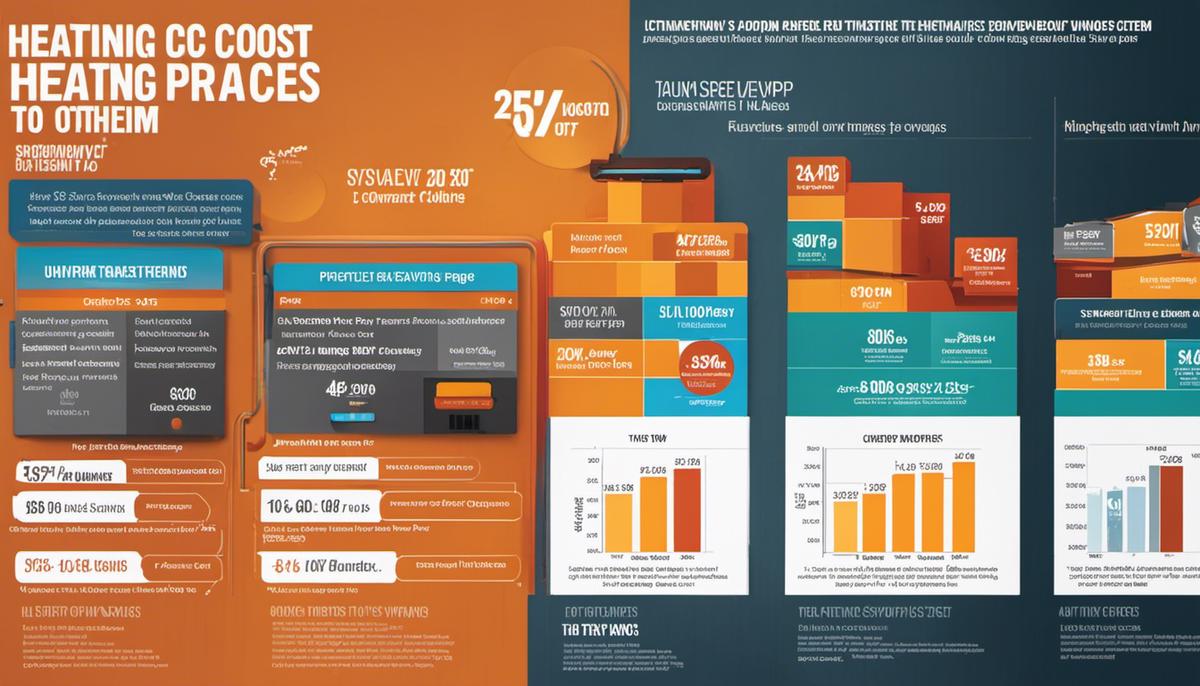
Future Trends and Developments
As we navigate the decade and approach an era where technology and environmental conservation play pivotal roles in shaping the globe’s future, heat pumps and furnaces are not excluded from this evolution. Current trends suggest a gravitation towards more sustainable and efficient heating solutions, strongly influenced by advancements in technology and growing environmental concern.
In this trajectory towards sustainability, the integration of smart technology is becoming increasingly prevalent. Emerging smart heat pumps and furnaces feature IoT (Internet of Things) capabilities, integrating seamlessly with other smart home systems. This connectivity facilitates more precise control over room temperatures, enhances energy management efforts, and allows for proactive maintenance – predicting and diagnosing issues before they culminate in system failure.
Moreover, future improvements in nanotechnology hold promising prospects for these heating systems. For instance, coating or infusing parts with nanoparticles could enhance heat transfer rates, resulting in significantly higher operational efficiency. This concept, when crystallized, could revolutionize the functionality of heat pumps and furnaces, potentially expanding their usability across various climates and extending their lifetimes.
The use of artificial intelligence (AI) and machine learning algorithms will also play a critical role in heating system advancements. These technologies can optimize the performance and efficiency of heat pumps and furnaces through adaptive learning capabilities. They will be able to understand and adapt to peoples’ habits, preferences, and the varying external climate conditions, subsequently auto-adjusting to provide optimal comfort while maximizing energy efficiency.
Another considerable influence on the future of heat pumps and furnaces is the global push for decarbonization. As governments enact more stringent regulations to curb carbon emissions and global warming, there will be a strong impetus for the more widespread adoption of heat pumps, especially those harnessing renewable energy sources. Simultaneously, the thrust will be intense towards developing more efficient furnaces that significantly reduce carbon emissions.
The rise in use of hydrogen fuel also marks a significant trend for traditional furnaces. Amidst the race against climate change, there is growing interest in hydrogen, particularly as a substitute for natural gas. Hydrogen produces heat when combusted, but unlike natural gas, it releases water vapor instead of carbon dioxide – laying out a potentially revolutionary pathway for furnaces in the ongoing pursuit of decarbonization.
Given this panorama, the future landscape for heat pumps and furnaces appears to be marked by myriad improvements in efficiency, lifecycle, and eco-friendly measures. While the path will certainly be challenging, through continuous research, rigorous testing, and relentless innovation, we can undoubtedly look forward to a more sustainable future.
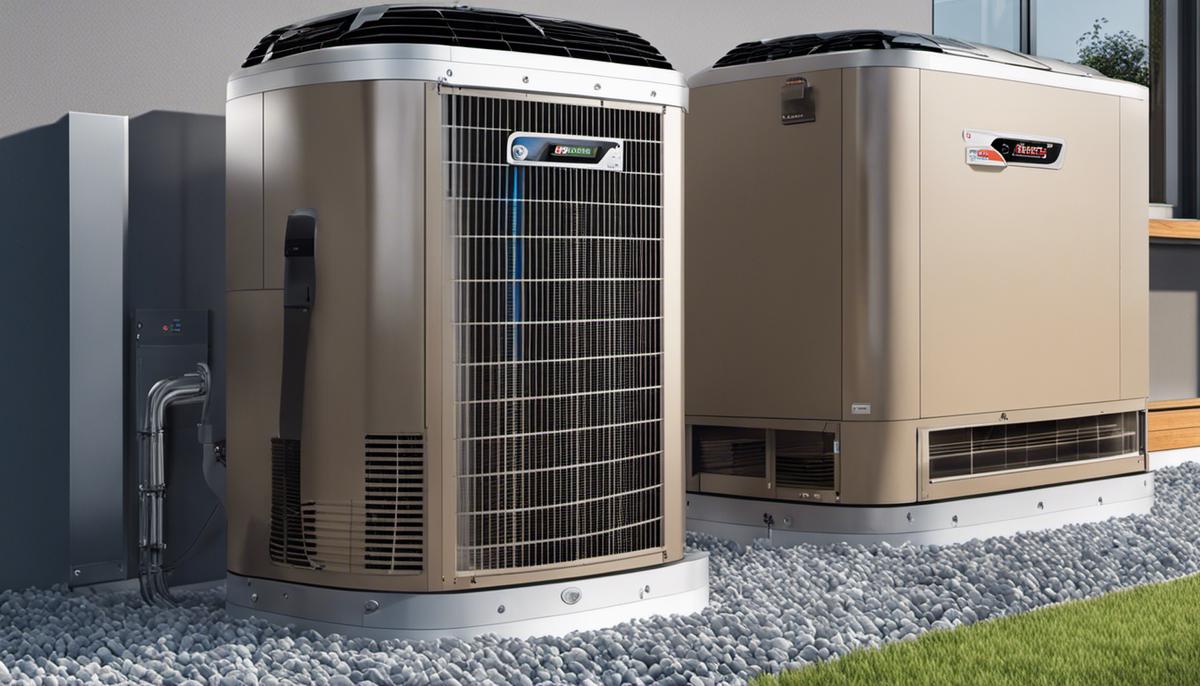
In an era dominated by global warming, resource management, energy efficiency and environmental consciousness, it is critical to review and comprehend the existing methods that impact our living environments and energy ecosystems. As we explored the operational anatomy, energy efficiency, ecological effects, cost implications, and future trends associated with heat pumps and furnaces, it is evident that a mindful selection of our heating systems can greatly impact our immediate environments and energy expenditures. Aware and thoughtful decisions on energy consumption, being cognizant of the economic and ecological implications, while staying open to emerging innovations, can serve as stepping stones towards a more ethically, economically and environmentally effective future.

Matt Smith is a seasoned journalist and author whose expertise spans across the dynamic realms of Politics, Gadgets, Gaming, and a plethora of general interest topics. With a Master’s in Political science and tech pedigree shaped in Silicon Valley, Matt brings a wealth of knowledge and a critical eye to everything he writes.
Politics: Matt offers sharp political commentary, drawing from his experience as a political analyst and his academic rigor.
Gadgets: His tech insights are grounded in real-world experience, having been on the front lines of innovation with a degree from Caltech.
Gaming: A respected voice in gaming, Matt’s reviews and trend analyses are a testament to his deep involvement in the gaming community.
General Topics: From science to culture, Matt’s writing spans a broad spectrum, engaging readers with a blend of expertise and relatable prose.
Engage with Matt’s compelling content for a fresh perspective on the issues at the forefront of today’s discourse.

